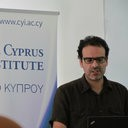Assessing the Climate of the Eastern Mediterranean and the Middle East/North Africa
A special issue of Atmosphere (ISSN 2073-4433). This special issue belongs to the section "Climatology".
Deadline for manuscript submissions: closed (30 April 2020) | Viewed by 81390
Special Issue Editors
Interests: dynamical downscaling of past, present, and future climate; indices and impacts of climate change extremes; atmospheric circulation links; climate statistics, stratospheric ozone depletion, trends, and future recovery
Interests: climate variability; climate and climate change; impacts of climate change in water resources and agriculture; detection of climate change signals and future climate change in the Middle East with a focus on the Arabian Peninsula; global and regional climate modeling; large-scale circulation patterns affecting local climate elements in Saudi Arabia; relationship to extremes and large-scale teleconnections
Special Issue Information
Dear Colleagues,
The region encompassing the Eastern Mediterranean (EM) and the Middle East/North Africa (MENA) is made up of two dozen countries with over 400 million inhabitants. The five most populated metropolitan cities (Cairo, Istanbul, Tehran, Baghdad, and Riyadh) have a total of nearly 60 million inhabitants. After years of intense industrialization, rapid population growth, urbanization, and extensive land conversion, the EM/MENA is now considered a global climate change ‘hot spot’. Temperature has increased faster than the global average and rainfall decreased in recent decades, while model projections indicate even warmer and drier conditions for the 21st century.
Manuscripts are invited to further document and investigate past, present, and future climate evolution, and related processes, responses, and atmospheric impacts, based on model simulations and/or analysis of observed data. Potential topics pertinent to the climate of the EM/MENA region may include:
- Climate change, trends, and projections;
- Observational analysis and/or model evaluation;
- Atmospheric circulation regimes;
- Links with global teleconnections;
- Heat and hydrometeorological extremes;
- Region, country or local scale climate change assessments.
Contributions from the CORDEX regional climate modeling community are especially welcome.
Dr. Panos Hadjinicolaou
Prof. Mansour Almazroui
Guest Editors
Manuscript Submission Information
Manuscripts should be submitted online at www.mdpi.com by registering and logging in to this website. Once you are registered, click here to go to the submission form. Manuscripts can be submitted until the deadline. All submissions that pass pre-check are peer-reviewed. Accepted papers will be published continuously in the journal (as soon as accepted) and will be listed together on the special issue website. Research articles, review articles as well as short communications are invited. For planned papers, a title and short abstract (about 250 words) can be sent to the Editorial Office for assessment.
Submitted manuscripts should not have been published previously, nor be under consideration for publication elsewhere (except conference proceedings papers). All manuscripts are thoroughly refereed through a single-blind peer-review process. A guide for authors and other relevant information for submission of manuscripts is available on the Instructions for Authors page. Atmosphere is an international peer-reviewed open access monthly journal published by MDPI.
Please visit the Instructions for Authors page before submitting a manuscript. The Article Processing Charge (APC) for publication in this open access journal is 2400 CHF (Swiss Francs). Submitted papers should be well formatted and use good English. Authors may use MDPI's English editing service prior to publication or during author revisions.
Keywords
- Climatology
- Extremes
- Climate change
- Modeling
- Observations
- Mediterranean
- Middle East
- North Africa
Benefits of Publishing in a Special Issue
- Ease of navigation: Grouping papers by topic helps scholars navigate broad scope journals more efficiently.
- Greater discoverability: Special Issues support the reach and impact of scientific research. Articles in Special Issues are more discoverable and cited more frequently.
- Expansion of research network: Special Issues facilitate connections among authors, fostering scientific collaborations.
- External promotion: Articles in Special Issues are often promoted through the journal's social media, increasing their visibility.
- Reprint: MDPI Books provides the opportunity to republish successful Special Issues in book format, both online and in print.
Further information on MDPI's Special Issue policies can be found here.






